Cleaning your teeth and gums is vital during your orthodontic treatment. You can brush and floss as usual, but it will be more difficult for you to reach areas between the orthodontic brackets. There are different kinds of brushes for this purpose. You can use an Electric toothbrush, Water flosser, or Interdental brush. You can also use a water pick. Make sure to follow your dentist's instructions regarding proper brushing and flossing techniques for orthodontic treatment.
Table of Contents
Interdental brush
You must maintain daily oral hygiene with braces to maintain your new smile. You need to floss and brush your teeth at least twice a day to remove food particles and bacteria. Use an interdental brush, also known as a proxabrush, to clean the space between your braces and teeth. You can also use a pipe cleaner brush to dislodge food stuck in your braces.
An interdental brush is a small, pointy toothbrush with bristles on all sides. These brushes can be bought in many sizes and colors. Make sure to ask your orthodontist what size is right for your mouth. You can purchase the brush in various sizes, depending on your orthodontist's recommendation. Using one with the right size will help you maintain the shape of your braces and keep your teeth and gums healthy.
Flossing with braces is tricky but very important for oral health. When brushing with a toothbrush, angle it upwards for your lower teeth and downwards for your upper teeth. After you finish brushing, floss the entire mouth by using the same technique as before. Use a floss threader to pull the floss underneath the wire. Floss your teeth at least five times to remove plaque.
While a toothbrush is not a substitute for flossing, an interdental brush is a good alternative to flossing. You can also buy a small interdental brush at a drugstore near the floss. Using this small brush is more convenient than using floss, and it is a discreet alternative. As you can see, interdental brushing and flossing with braces is a crucial part of oral health and you should prepare to devote extra time to it to maintain your smile.
Water flosser
For people with braces, a water flosser may help with cleaning around the brackets and other dental work. This tool will help you get rid of food stuck between the brackets and floss, while also massaging gum tissue to promote blood flow. Waterpiks have specialized jet tips that can clean underneath the gum line. According to a study, using a water flosser with an orthodontic jet tip reduced plaque and bleeding gums.
A water flosser with a charging cable can help people with braces brush and maintain their oral hygiene routine. It can help to keep the bathroom organized, since you won't have to worry about accidentally activating it during a session. A device with USB charging ports is more convenient, since it eliminates the bulky power brick. It's especially useful if you travel a lot and don't have time to recharge the device on a regular basis. You can also choose a model with a two-year warranty, as some come with only a year.
Another option is to use an electric flosser. This device will clean your teeth as well as any other flosser, with a 300 ml tank. On its most intense setting, it will work for about 90 seconds. Brushing and flossing with braces can be a time-consuming process, but it will be worth it when your new, beautiful smile is the reward. And a water flosser can make your routine more convenient and effective.
While a water flosser can help you avoid the hassles of brushing and flossing with braces, it is not the best option for everyone. If you can't reach your gums with your toothbrush, try using a special threader that helps you reach these difficult spaces. Even though it is easier to get floss through the teeth than regular floss, it's important to use the traditional type as well.
Electric toothbrush
When wearing braces, proper oral hygiene is crucial. Unlike normal teeth, braces can trap food between brackets and under archwires, making it difficult to brush thoroughly. A recent study shows that electric toothbrushes remove more plaque than manual brushes. Therefore, the electric toothbrush may be the best choice for patients with braces. But how does one choose the best one? Below, we will look at some of the advantages and disadvantages of electric toothbrushes.
First, electric toothbrushes clean better than manual brushes. Some of the top models can remove up to two times more plaque than manual toothbrushes. Brushing with braces requires patience, and electric toothbrushes have these features. An electric toothbrush may be the best option if you are having trouble keeping up with your oral hygiene routine. Electric toothbrushes help you brush properly and help prevent cavities. This toothbrush will allow you to brush your teeth thoroughly, which will protect your braces from damage.
While manual toothbrushes are okay, they can make brushing with braces difficult for you. You may also be tempted to use a manual toothbrush instead, but research shows that this will lead to poor oral hygiene. Studies also show that people with braces often brush their teeth for shorter periods of time than necessary. An electric toothbrush will enable you to brush your teeth twice a day with ease and without damaging your orthodontic appliances.
Another advantage of an electric toothbrush for brushing and flossing with brace patients is its portability. A battery-operated toothbrush can be recharged on a wall outlet, making it easier to use on the go. However, the battery life on an electric toothbrush is usually not that great, and rechargeable toothbrushes usually cost more than manual brushes. Therefore, it's important to choose a toothbrush that is easy to take along when you go out to eat.
Water pick
Among the many benefits of using a water pick for brushing and flossing with brace is the reduction of plaque and bacteria. A water pick is similar to a small pressurized irrigator that aims a stream of water at your teeth. Although it is not a substitute for brushing and flossing with braces, it can help improve oral hygiene and prevent staining.
While waterpiks are often recommended for people with braces, they are not an alternative to dental floss. Flossing is more difficult for people with braces because it irritates gum tissue and can cause bleeding. Plus, dental floss cannot penetrate brace wires, which can obstruct proper brushing. A waterpik can reach food particles that would otherwise remain trapped behind braces and flush bacteria from deep pockets.
A water pick for brushing and flossing with brace can also be an effective alternative to traditional toothbrushes. These tools are designed specifically to clean braces, and have an orthodontic nozzle to disrupt plaque. They also contain a nozzle that uses pressurized water to remove bacteria. Unlike traditional toothbrushes, these water picks can help patients who wear braces. The orthobrushes help to remove plaque and tartar.
One of the benefits of using a waterpick for brushing and flossing with braces is its ability to easily clean braces with ease. They come with a wide variety of tips and are simple to use. A Waterpik for brushing and flossing with braces is an excellent choice for anyone who has trouble brushing and flossing their teeth using traditional toothbrushes and irrigators.
Oral irrigator
One of the challenges for anyone wearing braces is brushing and flossing. Food particles can get trapped in the small crevices around braces and gums. Many patients neglect flossing at night, increasing the risk of cavities. A simple way to combat this is with an oral irrigator. It can be used as a daily part of your routine or in between meals. Here are some reasons why you might want to use one.
If you wear braces, using an oral irrigator can help you avoid dental issues associated with the appliances. The waterpik's water stream is gentle enough to clean all parts of your mouth, and the device's tapered tip helps you clean areas around braces. When used properly, the water flosser should be held at a 90-degree angle to teeth so that it can effectively clean spaces in between them. The best ones should have an American Dental Association seal of approval. You can also look for special orthodontic tips to clean the areas around fixed appliances.
Another oral irrigator is suitable for brushing and flossing with braces. It is a professional-grade product that is recommended for people who are unable to brush and floss their teeth properly. The Under the Gums Irrigant is available in a 4.1-ounce glass bottle and has the ability to clean your teeth after brushing and flossing. This product can last up to two months.
The Waterpik, an oral irrigator, and other similar devices can help you clean in between your teeth. Water flossers can help you clean food and plaque that gets trapped under your braces and gums. They also massage gum tissue and promote circulation. Some brands of Waterpik have special tips for orthodontia, allowing you to brush and floss with braces. You can also use mouthwash as a bonus.

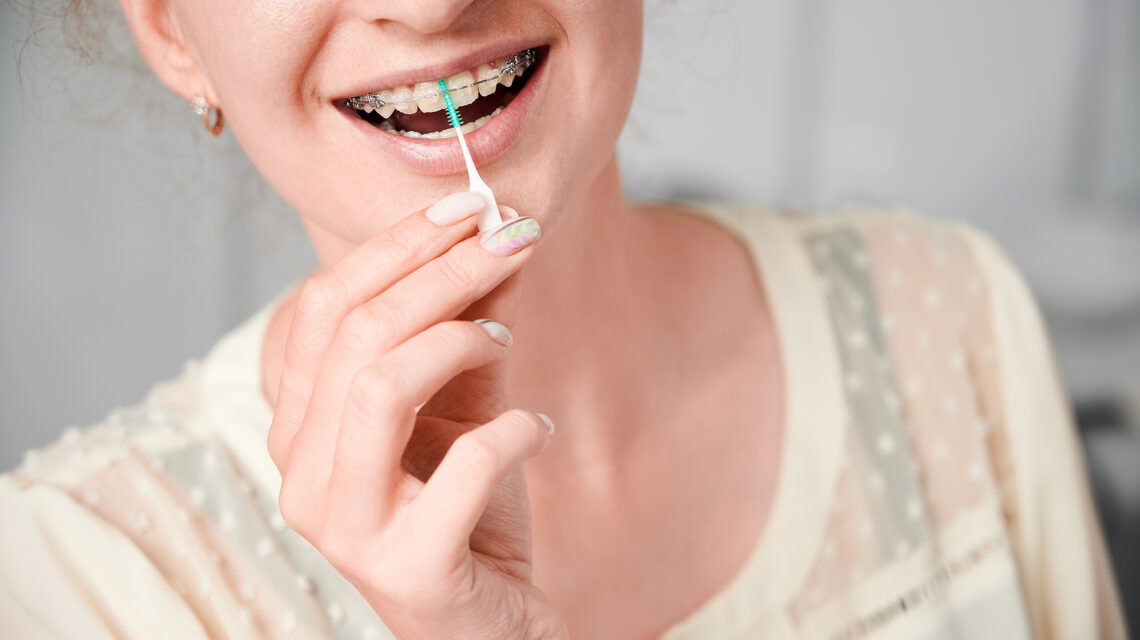

 Why You Should Brush and Floss Regularly
Why You Should Brush and Floss Regularly 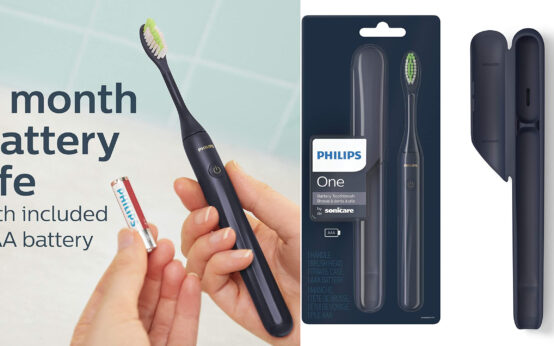 Philips One by Sonicare Battery Toothbrush Review
Philips One by Sonicare Battery Toothbrush Review 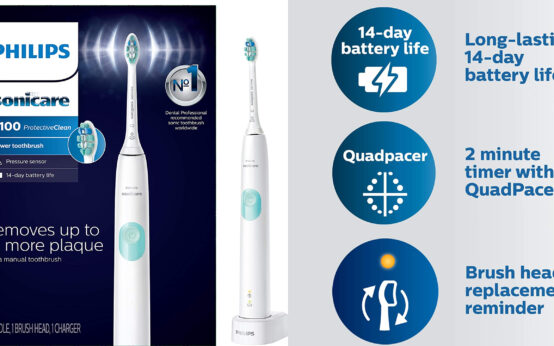 Philips Sonicare ProtectiveClean 4100 Electric Power Toothbrush Review
Philips Sonicare ProtectiveClean 4100 Electric Power Toothbrush Review 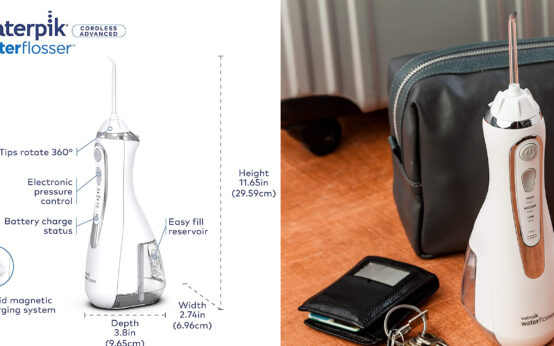 Waterpik Cordless Water Flossant Review
Waterpik Cordless Water Flossant Review 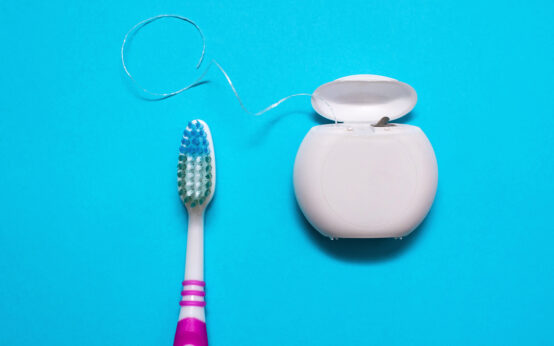 Choosing the Right Dental Floss Brush
Choosing the Right Dental Floss Brush